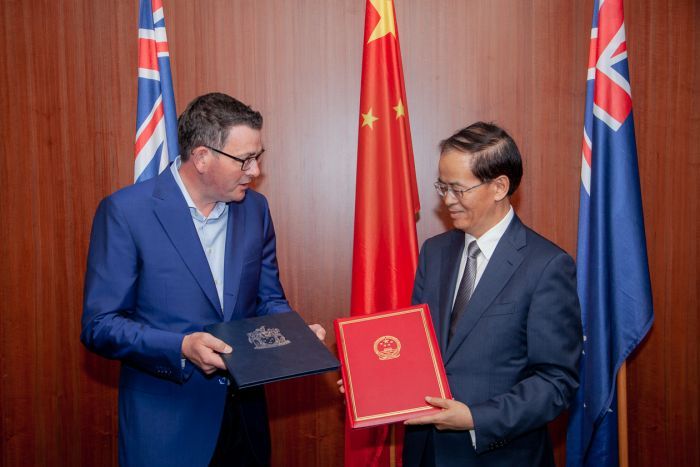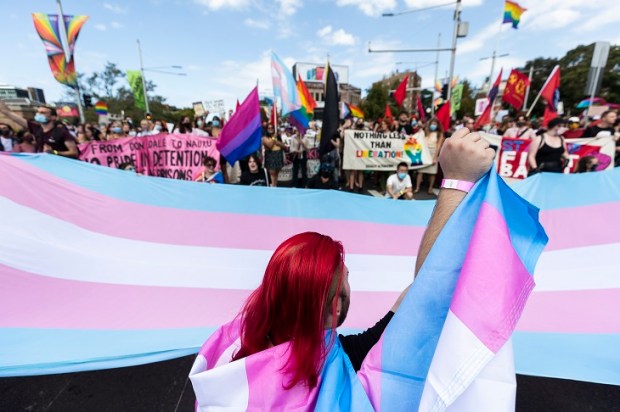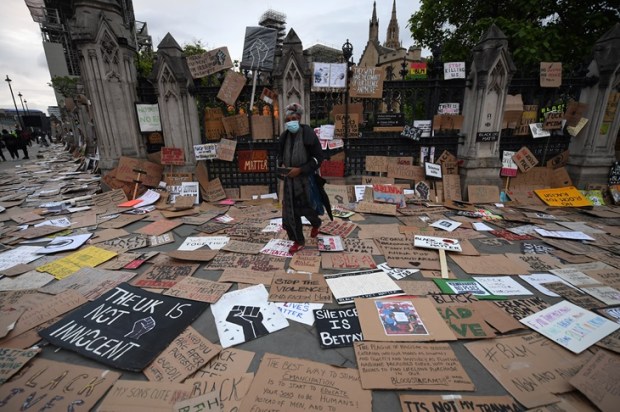Our federal parliamentarians – even Labor, since this is new territory – have been caught off-guard by reports that Victorian Premier Dan Andrews has sealed a Memorandum of Understanding (details still undisclosed) with China’s Ambassador to Australia Cheng Jingye, involving Xi Jinping’s grand Belt and Road Initiative, or BRI.
So why has Victoria chosen to take this action seeing that it’s a state rather than a national government and constitutionally ineligible to conduct international treaties, explained rather lamely, by Labor’s Acting Foreign Minister Mark Dreyfus, as a “consultation mechanism”.
What will come of it will be revealed, no doubt, in a Yes, Ministerial “fullness of time”, but it would seem that this was someone in Andrews ranks deciding a link-up with China’s much-reported BRI was well worth presenting to the punters before the State election. No details, of course, that’s still to be worked out. Or not.
Victorians might want to find out about the history of other BRI projects – like the one, for instance, in Hambantota, in Sri Lanka’s south, where an ambitious BRI building project including an airport, land that was part of the fiefdom of former prime minister Mahinda Rajapaksa, was leased, meaning sold, to the Chinese.
Outraged rice farmers and their families, small stall holders and Buddhist monks all banded together to thwart the project in a violent confrontation, protesting that no part of the island should be sold or under foreign control. Sri Lanka, a majority devoutly-Buddhist country, is believed to be the second place, after India, to receive the teaching of the Buddha, and is therefore not to be sold, leased or divided with foreigners.
The Chinese, undeterred, announced another huge project, the largest ever undertaken in Sri Lanka, in the capital Colombo, engineered by CHEC Port City Colombo, a subsidiary of China’s State-owned China Communications Construction Company. The new port infrastructure built on reclaimed land will practically hide the much-loved, colonial-era Galle Face Green and adjoining Galle Face Hotel from view and its importance in the BRI was underlined by the fact the in 2014, China’s leader Mr Xi cut the ribbon in person.
Galle Face Green has particular heritage value, a swathe of green from the years of the British Raj that saw generations of local families from diverse communities strolling around, enjoying the evening cool. In the war years, British regiments drilled on the broad flat expanse, and a former, rather pro-British prime minister Sir John Kothelawela, often rode his horse along the Green, to the cheers of Colombo folk.
The Hambantota farmers and Buddhist priests, like Melburnians, were not told beforehand of the Chinese deal.
One wonders if the good burghers of Melbourne will put up a similar fight to the rice farmers of Hambantota, when they discover what they’re in for on the BRI.
Illustration: Chinese Consultate, Sydney.
Got something to add? Join the discussion and comment below.
Got something to add? Join the discussion and comment below.
Get 10 issues for just $10
Subscribe to The Spectator Australia today for the next 10 magazine issues, plus full online access, for just $10.


























Comments
Don't miss out
Join the conversation with other Spectator Australia readers. Subscribe to leave a comment.
SUBSCRIBEAlready a subscriber? Log in